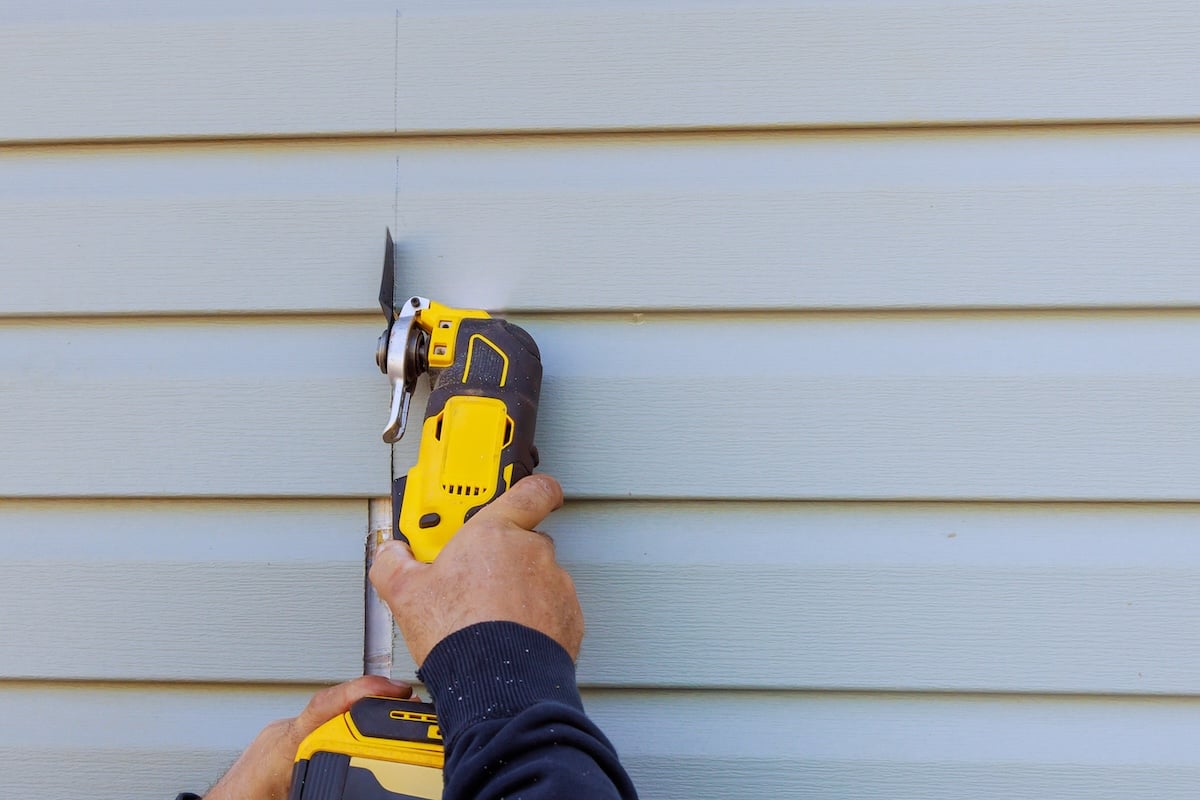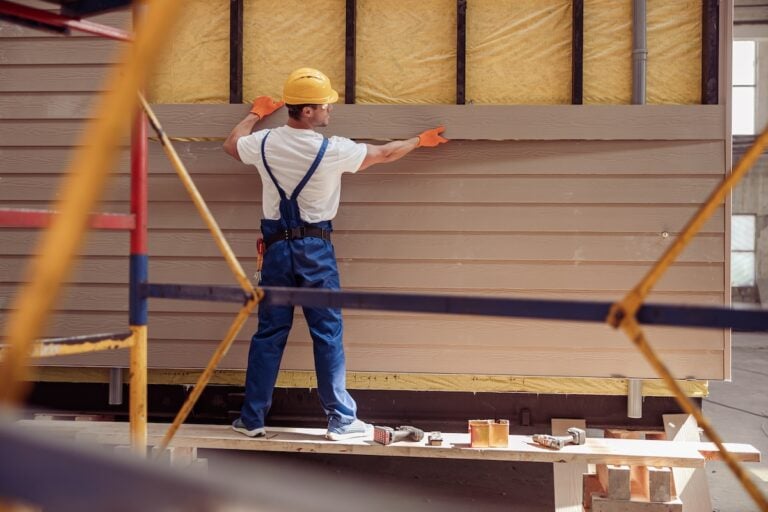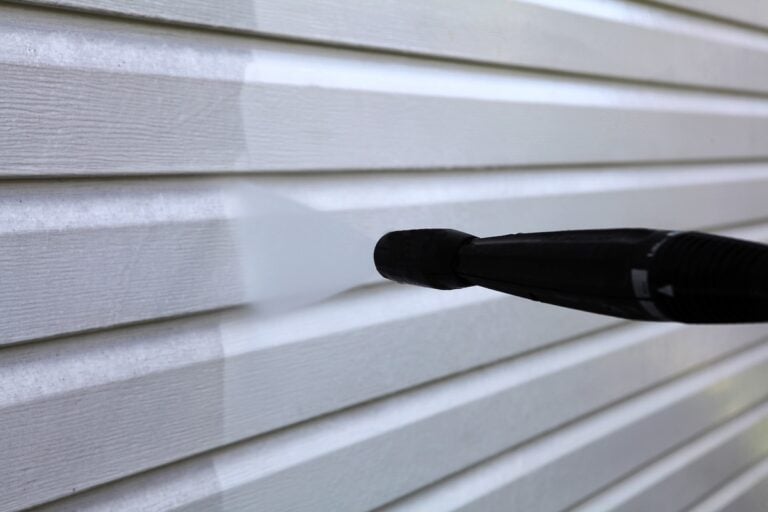If you’re planning exterior upgrades or dealing with storm damage, understanding your potential siding repair cost is essential. While siding protects your home from the elements, even a small crack or hole can lead to bigger problems if ignored.
In this guide, we’ll walk you through:
- Typical siding repair costs in 2025: Based on material, size of damage, and labor.
- When repair is worth it vs. replacement: And how to make the call.
- Tips to save money: Without cutting corners or risking poor workmanship.
Let’s break down what homeowners can expect when it’s time to repair their siding.
💵 What Impacts Siding Repair Costs?
Siding repair pricing isn’t one-size-fits-all. The total you pay depends on several factors, including material, extent of damage, labor rates, and accessibility.

Type of Siding Material
Some materials are easier and cheaper to repair than others. Here’s a breakdown of common options:
- Vinyl siding: One of the most affordable and DIY-friendly materials. Repairs usually cost between $4–$12 per square foot.
- Fiber cement siding (like Hardie): More durable but also pricier, ranging from $8–$20 per square foot.
- Wood siding: Classic and customizable, but prone to rot. Repairs cost $6–$16 per square foot, depending on species and availability.
- Aluminum siding: Rare in newer homes, but still seen in older properties. Repairs usually run $5–$13 per square foot.
- Engineered wood or composite siding: Modern, mid-range material with costs similar to fiber cement.
Size and Scope of the Repair
The extent of damage is one of the biggest cost drivers.
- Small patch repairs: Minor holes or cracks might only cost $100–$300.
- Section replacements: Replacing multiple panels or boards can run $500–$1,500.
- Widespread damage: If over 25% of your siding is affected, full replacement may be more cost-effective.
Labor and Accessibility
Some repairs are quick and easy, while others require scaffolding, special tools, or extensive prep.
- One-story homes: Easier access = lower labor costs.
- Two-story or steep terrain: Adds time and risk, increasing total cost.
- Intricate trim or detail work: Custom features increase complexity and cost.
❗️ Common Types of Siding Damage
Understanding the nature of the damage helps you estimate how intensive (and expensive) the repair might be.
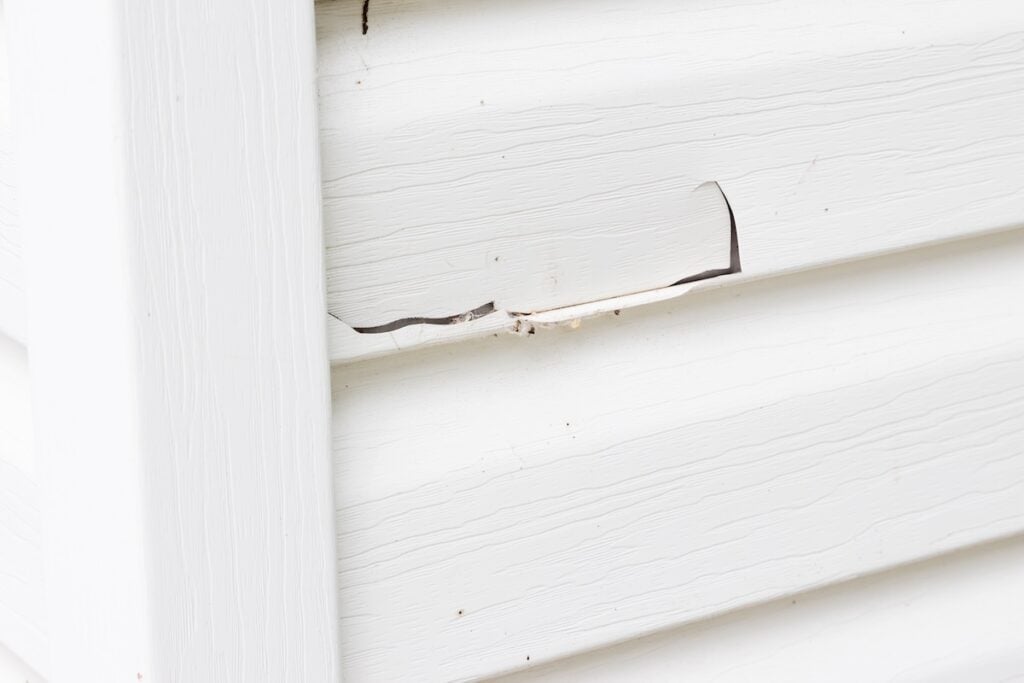
Cracks and Holes
These are usually caused by hail, rocks from the lawn mower, or blunt force impact.
- Vinyl patch kits or panel swaps: Simple fixes if the color match is available.
- Hardie board cracks: May require replacing an entire plank due to brittleness.
Warping or Buckling
Often caused by improper installation or heat exposure (especially in vinyl siding).
- Localized warping: A few affected panels might cost $300–$600.
- Widespread distortion: May require larger-scale replacement.
Water Damage and Rot
This is especially common in wood siding that hasn’t been properly sealed or maintained.
- Minor soft spots: Can be cut out and replaced.
- Advanced rot: May involve replacing sheathing beneath the siding, increasing labor and material costs.
Pest Damage
Woodpeckers, termites, or carpenter ants can wreak havoc on certain types of siding.
- Small infested areas: Often cost under $500 to treat and repair.
- Structural or hidden damage: Could require siding, framing, and pest control services.
👉 Average Siding Repair Costs By Material (2025)
Here’s a snapshot of typical costs homeowners can expect this year:
| Siding Type | Repair Cost Per Sq. Ft. | Typical Repair Range |
| Vinyl | $4 – $12 | $150 – $800 |
| Fiber Cement (Hardie) | $8 – $20 | $250 – $1,200 |
| Wood (Cedar, Pine) | $6 – $16 | $200 – $1,000 |
| Engineered Wood | $7 – $15 | $250 – $1,100 |
| Aluminum | $5 – $13 | $200 – $850 |
Keep in mind that pricing varies by region and contractor availability.
🛠️ Repair or Replace? When to Make the Call
Sometimes, repairing your siding is a short-term fix, especially if the damage is part of a bigger issue. Here’s how to decide which route makes the most sense.
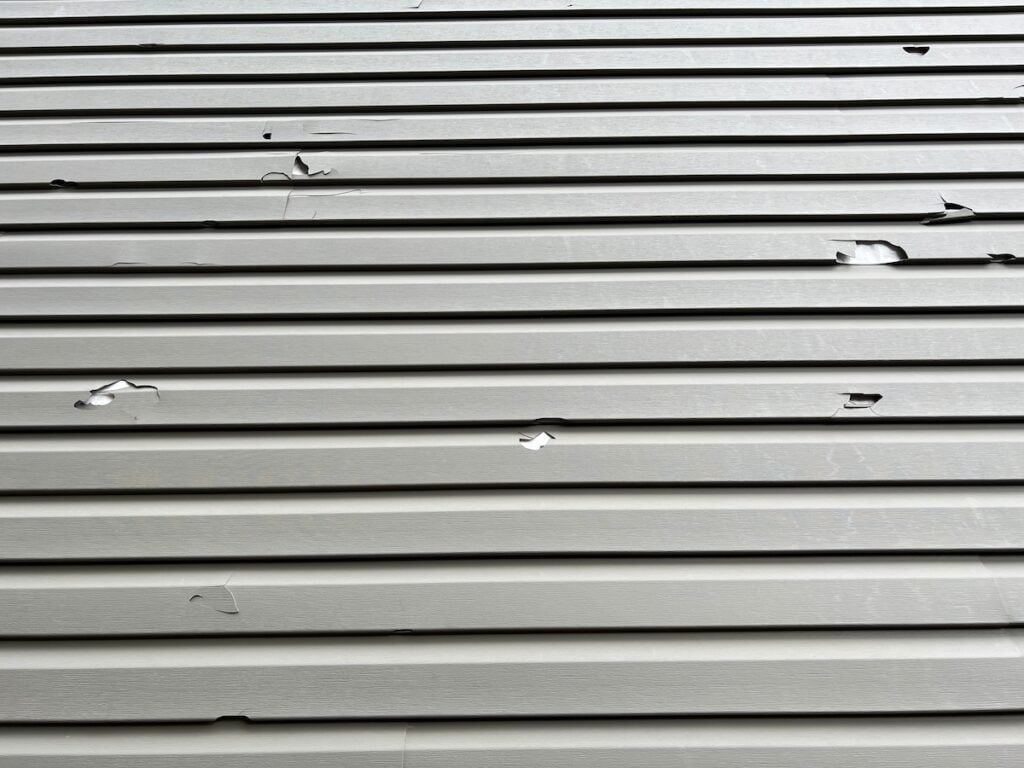
When Repair Makes Sense
- Damage is isolated: One or two panels are affected, and the rest of your siding is in good shape.
- Color and style match is available: Replacement materials match seamlessly.
- You’re planning to sell soon: Minor repairs improve curb appeal without major investment.
When Replacement Is Better
- Your siding is over 20 years old: Materials may be brittle, faded, or near the end of their useful life.
- Frequent repairs are needed: If you’re calling for service every season, replacement is more economical.
- Hidden water or structural damage: These problems often call for a more comprehensive fix.
If you’re unsure, a trusted contractor can help you evaluate whether repair or replacement offers the better long-term value.
👍 Ways To Save On Siding Repair Costs
There are smart ways to reduce costs, without compromising quality or protection.
Get Multiple Quotes
Don’t settle for the first estimate. Get 2–3 quotes to compare pricing and approach.
- Look for detailed breakdowns: Know exactly what’s included.
- Watch out for too-good-to-be-true pricing: It may indicate low-grade materials or shortcuts.
Choose Matching Alternatives
If your siding is discontinued, an exact match may be impossible. But some contractors can source close alternatives or suggest repainting to create uniformity.
- Paint entire walls: Helps blend in new panels with existing siding.
- Use leftover materials: If you have extra siding from a past job, bring it out.
Perform Preventative Maintenance
Keeping your siding in top shape reduces the likelihood of future repairs.
- Repaint and reseal regularly: Especially important for wood siding.
- Inspect after storms: Catch small issues before they grow.
- Clean annually: Prevents mold, mildew, and grime buildup.
🤔 Is Siding Repair Covered By Insurance?
In some cases, yes, but it depends on how the damage occurred and what your policy covers.

Covered Scenarios
- Storm or hail damage: Often covered under standard homeowners insurance.
- Fallen trees or wind: May be eligible depending on the event.
- Vandalism or fire: Typically covered under most policies.
Not Usually Covered
- Normal wear and tear: Age-related fading or rot isn’t covered.
- Insect damage: Termite or pest issues may fall under home maintenance responsibilities.
- Improper installation: Workmanship-related problems usually aren’t covered unless you have a warranty.
Before filing a claim, contact your provider and review your policy’s siding-related terms. A contractor can also help document the damage properly.
💪 Plan Smart, Fix Wisely
Siding repair cost varies, but staying informed puts you in control. Whether you’re dealing with storm damage, rot, or just a few loose panels, understanding your options helps you make confident choices without overspending.
At Boss Exteriors, we’re here to help you protect your home with smart, honest service. Our experienced team can assess your siding damage, explain your options clearly, and perform repairs that last. Whether it’s a small patch or a larger project, you can count on us for quality workmanship and straight answers.
Need help with siding repairs? Contact Boss Exteriors today to schedule your free siding evaluation.
